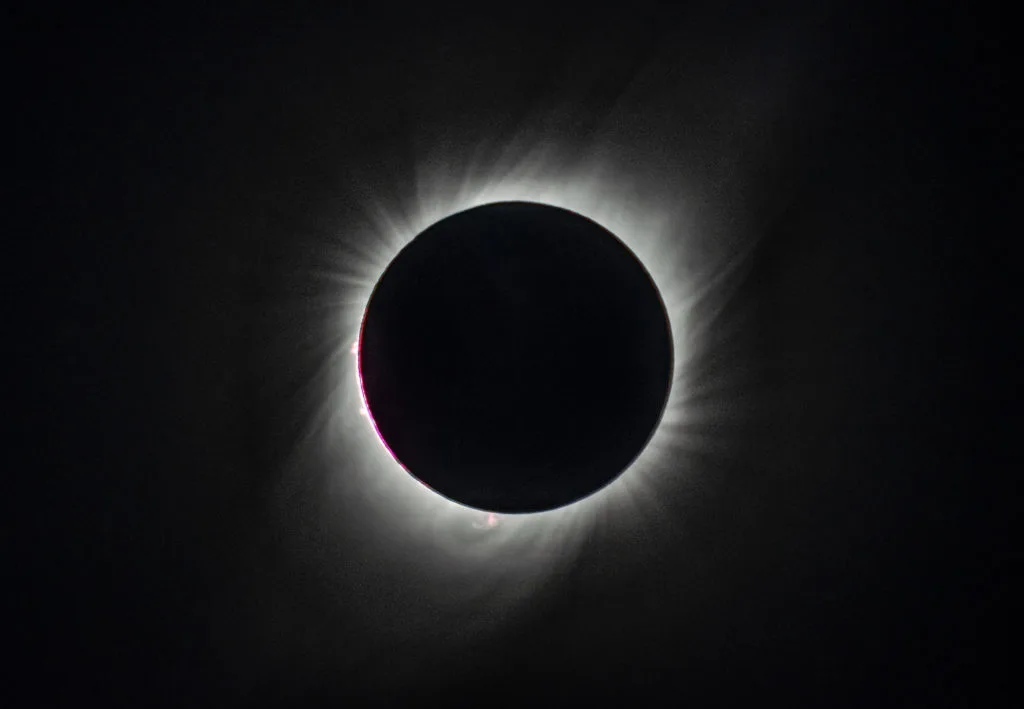Table of Contents
Scientists Forecast Appearance of Sun’s Bright Crown During Total Solar Eclipse
As the world eagerly anticipates the upcoming total solar eclipse on 8 April 2024, scientists are utilizing advanced technology to predict a rare glimpse of the Sun’s bright crown, as reported by India Today on 5 April.
During total solar eclipses, the outer atmosphere known as the corona is typically invisible to the naked eye, making these moments a captivating spectacle when the Sun unveils its crown.

Leveraging NASA’s Solar Dynamics Observatory (SDO) and the computational power of NASA’s Pleiades Supercomputer, researchers at Predictive Science are employing these tools to offer insights into the appearance of the solar corona during the impending eclipse.
Their real-time updated model aims to provide the most precise representation by continuously integrating fresh data from the SDO. The solar corona, besides being a celestial wonder, significantly influences space weather, impacting satellite communications and Earth’s power grids. Understanding and predicting the corona’s behavior can aid in mitigating the effects of space weather on our technology-dependent society.
Despite the challenges in measuring the magnetic fields that steer its activity, capturing the essence of the corona remains a complex task, as highlighted in the report.
Emily Mason, a research scientist at Predictive Science, emphasized the lack of accurate methods to gauge the magnetic field within the corona. The team has devised an automated process to address this issue, translating raw data from the SDO into dynamic models illustrating how magnetic energy shapes the corona over time.
This year’s model represents a significant advancement, focusing on the dynamic portrayal of the Sun’s surface magnetic field. This advancement will aid in monitoring the Sun’s activity during periods of heightened solar activity.
The new model energizes specific areas on the Sun based on extreme ultraviolet activity, a process previously done manually in earlier versions, showcasing the continuous progress in understanding and visualizing the Sun’s intricate dynamics during total solar eclipses.
ALSO READ | Exploring the Most Polluted Cities: A Growing Concern
How do scientists study the solar corona
Scientists study the solar corona using various methods and technologies to unravel its mysteries. One crucial tool is the coronagraph, a telescope that simulates solar eclipses by blocking out the Sun’s bright light, allowing for detailed imaging of the corona.
Ground-based and space-based coronagraphs are used to observe the corona, with space-based instruments like NASA’s Solar Dynamics Observatory providing continuous images of the corona.
During total solar eclipses, scientists can directly observe the corona when the Moon blocks the Sun’s disk, revealing the outer atmosphere that radiates beyond it like a halo. These rare events offer unique opportunities to study the corona in ways not possible under normal conditions.
Additionally, researchers use specialized telescopes equipped with cameras and occulting disks to block out the Sun’s bright surface and focus on the dimmer corona. By analyzing specific types of light emitted by the corona, scientists can gather valuable information about its temperature, structure, and dynamics.
For instance, during total solar eclipses, researchers can capture images of the corona in different temperature ranges, revealing intricate details about its composition and behavior.
Overall, scientists employ a combination of observational tools, including coronagraphs, telescopes, and specialized cameras, along with the unique opportunities presented by total solar eclipses, to study the solar corona and unlock its secrets regarding temperature differentials, magnetic fields, and solar wind dynamics
ALSO READ | The enduring mystery of the solar corona
